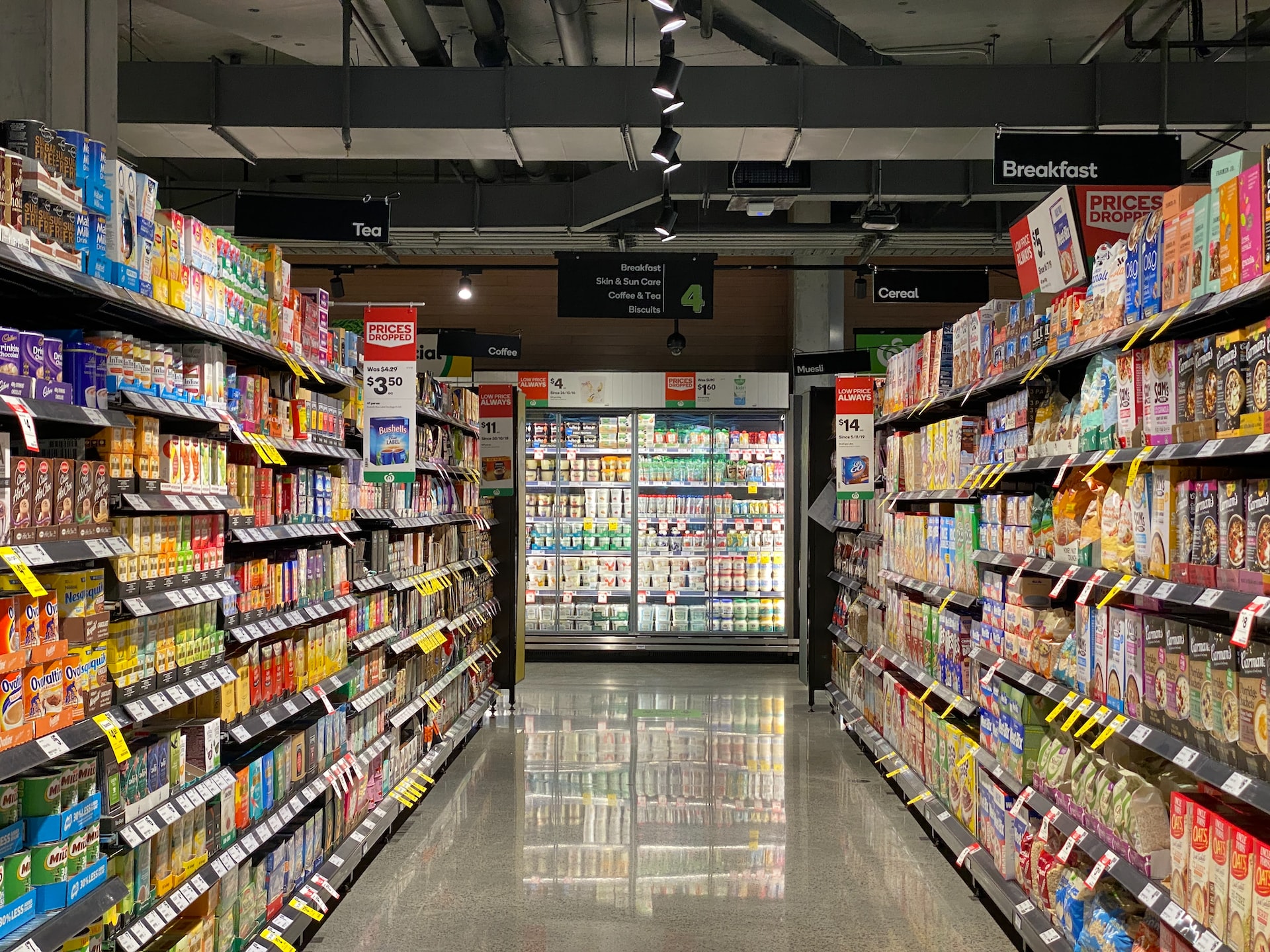Cooking at home is great for your health and it can help save you money. Cooking yourself means no more paying for expensive restaurant meals or delivery fees! But if you’re not careful, cooking at home can also be expensive. The key is to plan ahead, shop smartly and get creative with what’s in your fridge. This month, we’ve put together a list of ways you can slash the cost of groceries by half. So grab the grocery store flyer from this weekend and let’s get started!
1. Plan out your meals.
- Plan out your meals.
Planning out your meals is the best way to save money, time and eat healthier. Every week, sit down and write out a list of all the things you need for the upcoming week’s meals so that there are no surprises at the grocery store. This will also help you avoid eating out because making dinner at home is cheaper than eating out every night!
2. Make a shopping list and stick to it.
When you’re planning a trip to the grocery store, it’s easy to get carried away and buy things that you don’t really need. This is especially true if there are any sale items that catch your eye.
To keep yourself from making impulse purchases, make a shopping list before you go to the store. Write down everything that you need to buy before getting in the car and driving over there. By having a list of needed items, you can better control how much money gets spent at the checkout line.
When it comes time for checkout, stick with what’s on your list! If an item doesn’t appear anywhere in your written plan for purchasing groceries today, then don’t buy it! You’re wasting money on products that aren’t useful for yourself or anyone else in your family; plus, these wasted dollars could have gone toward something more useful (like paying off debt).
3. Buy what’s on sale
Have you ever noticed how some things are always on sale, while other items that you’d love to buy seem to never go on sale? That’s because the grocery store knows what people will buy and when. The good news is that when you know what’s on sale and make a list of those items, you can save money without having to worry about waiting for a bargain before buying something.
To make sure your “on-sale” list contains only things that are actually on sale, do your homework! Check out websites like Deals To Meals or PriceBlink which feature coupons specific to each item at Walmart, Target and more. You could even use Google Alerts if you’re really serious about knowing what’s going on in the world of sales (like me).
If nothing is going on at all–if no deals are happening–then wait until they are happening! There will always be another sale eventually…
4. Shop once a week instead of every few days
You’ll save on gas.
You’ll also be less tempted by impulse buys.
It will be easier to stick to your list, because you won’t have to go back for something forgotten (or decide which item you really need more).
And finally: It’s easier to eat healthy when you don’t have time for last-minute trips to the grocery store!
5. Stock up when you can
Lastly, stock up when you can. It’s hard to know when the best time to buy something is, but if you have a few bucks in your pocket and see an item on sale that has been on your shopping list for a while, don’t hesitate. If you’re worried about buying too much food and having to throw away spoiled or expired items, here are some tips for storing food:
- Keep perishable foods at proper temperatures inside of the refrigerator and freezer (see below).
- Put non-perishable foods in airtight containers so they don’t absorb moisture from other foods.
- Use clear plastic lids or plastic wrap over top of containers to keep out insects and pests.
6. Grow your own produce
If you’ve got the space, growing your own produce can save you a ton of money. Vegetables and fruits are cheap to buy but can be expensive to grow, especially if they’re not in season or if you’re buying everything at full price. On the other hand, if you have an extra bedroom and a little time on your hands, why not give it a try?
Growing plants indoors makes it easy for anyone with even the smallest apartment or house to grow food for themselves. As long as there’s enough sun (and sometimes even when there isn’t), you can plant herbs on a windowsill or in a greenhouse; tomatoes and peppers need more light so they’re best suited for balconies or small yards where they’ll get sunlight all day long. If all else fails, try indoor hydroponics—it’s easier than ever before!
7. Switch to store brands
- Switch to store brands.
- Store brands are a great way to save money and eat healthy, too. Some people think that they’re not as good as name-brand products, but this isn’t always true! You can compare the price of store brand products with their name-brand counterparts at your local grocery store or online. If you find that the store brand is less expensive than its counterpart, then it might be worth switching over.
- Shop by unit price (per ounce or pound).
It’s also important to consider quality when choosing what food items to buy: different foods vary greatly in terms of their nutritional value and calories per serving size—and some items may simply last longer than others before spoiling or going bad!
8. Buy in bulk
- You can save a lot of money by buying in bulk.
- Make sure the item you want to buy will fit your family size, financial situation, and food preferences.
- If it is something that you use often and love, then go for it! For example: canned fish (tuna), beans/peas/chickpeas, peanut butter, whole grains (quinoa).
9. Buy items in season
- Buy seasonal produce. By this, I don’t mean that you should only buy fruits and vegetables grown in your local area—though if they’re available, that’s great! But there are plenty of opportunities to find good deals on fresh produce at the grocery store. If you can find a grocery store that has a huge selection of organic produce, this is a great place to start.
- The best time of year to stock up on fresh produce is when it’s in season; otherwise known as when it’s cheapest and most nutritious! Some examples of what’s in season during winter include apples (which can be used for pie), cabbage (which makes great coleslaw), carrots (for carrot cake), cauliflower (a warm winter vegetable), cranberries (for Thanksgiving stuffing), cucumbers (to make dill pickles or relish), potatoes (baked with garlic butter sauce) oranges peppers pumpkins squash spinach tomatoes zucchini
10. Cook from scratch as much as possible
Cooking from scratch is the best way to slash your grocery bill. It’s cheaper, healthier, and more fun than eating out or ordering takeout every night. Cooking your own meals also helps you save time and gives you more control over what goes into the food you eat.
All it takes is a little planning, some basic cooking skills—or at least some willingness to learn them—and a few key ingredients that can be used in many different ways (like coconut oil).
Planning out your meals and shopping only once a week can make you spend half as much on groceries!
Planning out your meals and shopping only once a week can make you spend half as much on groceries.
It sounds like a lot of work, but when you get into the habit of planning your weekly menu, it’s actually not that difficult at all. The more you plan ahead the easier it will become, so start with something simple like two days worth of meals and go from there.
The key part is to learn how to meal plan properly so that nothing gets wasted or forgotten about. You’ll also be able to save money by planning out your meals and shopping once a week!
Conclusion
After all, it’s not like you can save money if you never have any left over to save! We hope these tips will help you get on track with a more frugal way of living. A lot of people think that being more frugal is all about giving up luxuries and living like an ascetic monk—but we think it’s much simpler than that. It starts with planning ahead and sticking to your list, before moving on to things like shopping only once a week or even growing your own produce. Once those habits are established, things like switching store brands can make all the difference in how much money goes out (and comes back into!) your bank account every month!





















